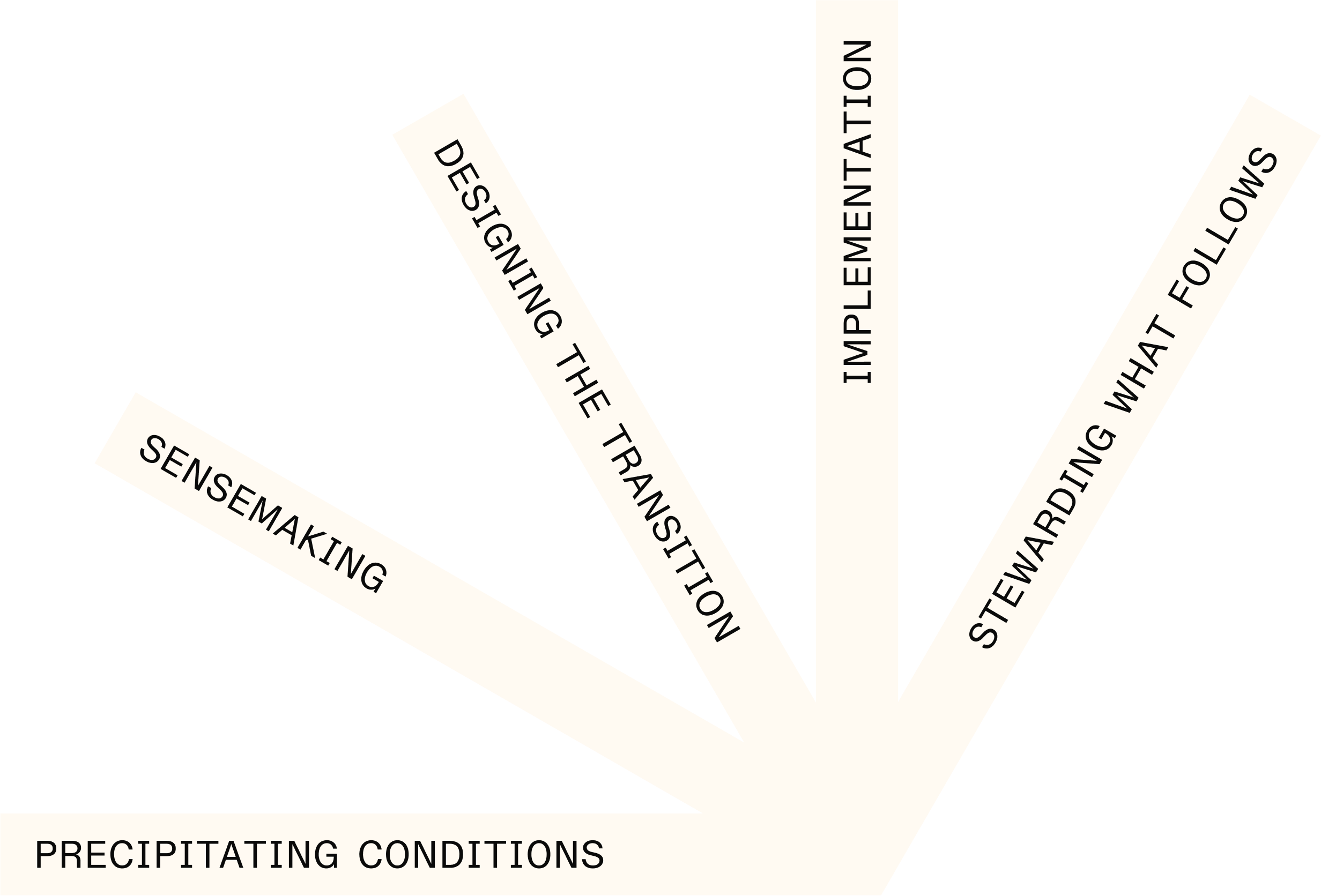
At Educopia, we see these moments not just as phases to manage, but as powerful frameworks for cultivating resilience, equity, and long-term impact. And beyond each individual community, we’re working toward a stronger, more connected knowledge ecosystem that can support all of us in doing this important work.
Every organization moves through transitions, but no two look the same. Educopia’s Transitions Matrix helps you assess where you are, explore key questions around governance, finance, and infrastructure, and learn from real-world case studies. Start mapping your own path today or share the tool with attribution—licensed under CC BY-NC-SA 4.0.
Through our deep experience as a backbone organization—providing consulting services, fiscal sponsorship, and conducting research across the knowledge ecosystem—we support groups at every stage of transition by aligning their practices with values, building internal capacity, and designing processes that hold both the urgency of now and the long arc of transformation. Examples of how Educopia designs transitions include: Developing ethical frameworks for emerging technologies; re-envisioning organizational identity and strategy; strengthening internal infrastructure for sustainability; responding to external crises or funding shifts

At Educopia, we’ve helped organizations navigate all kinds of transitions—sunsets, restructures, strategic shifts, and exits to networks. These transitions are often sparked by shifts in funding, leadership, community needs, or long-term vision. The table below outlines several types of transitions we’ve supported, what tends to spark them, and examples from our work. You might recognize your organization in one of them.
Click on a transition type (e.g., sunsetting, incorporation, etc.) to explore potential precipitating conditions and a case study from transitions Educopia has supported: